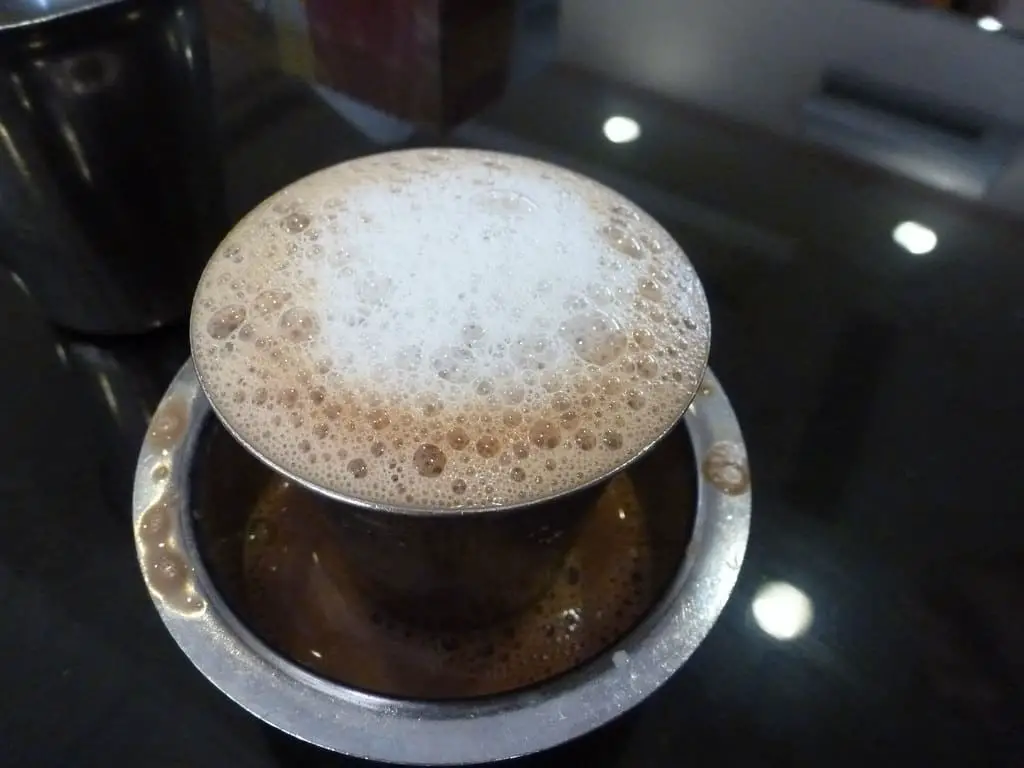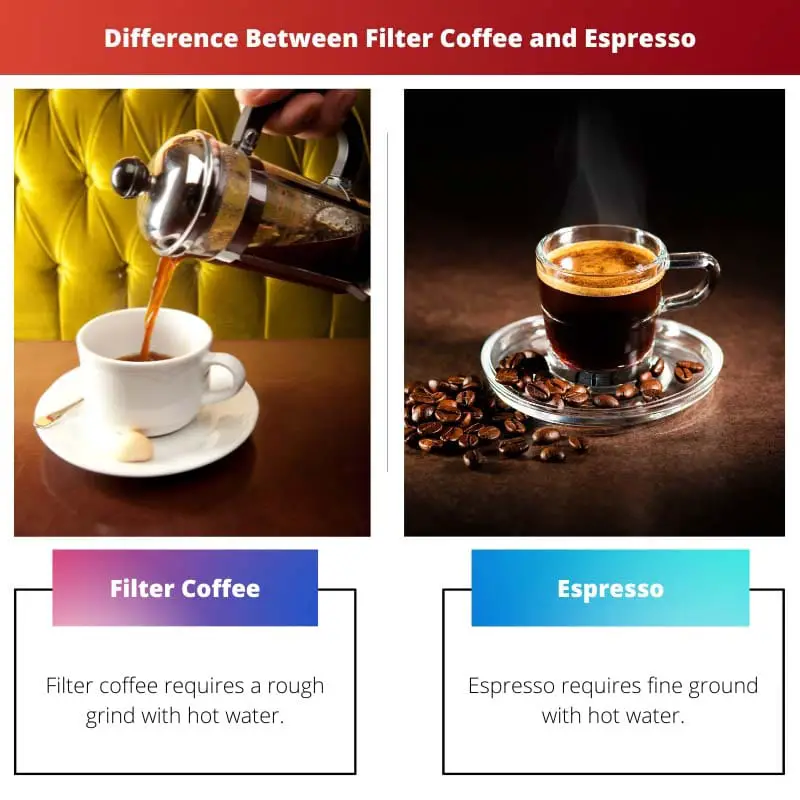Coffee is one of the most popular beverages today after beer and tea, excluding water. Can filter coffee and espresso be two different beverages?
Special coffee shops and baristas who enjoy their work tempt us with a vast range of flavors and styles, each with its peculiar charm. Some may be surprised to learn that they are both derived from the same coffee bean.
Both have a characteristic that makes them enjoyable in different ways when served properly. You may prefer one over the other, but you should learn what distinguishes them and is appropriate for your personality.
Key Takeaways
- Filter coffee is brewed slowly, gravity-based, resulting in a milder, less concentrated taste.
- Espresso is brewed using high pressure to force hot water through finely-ground coffee, producing a strong, concentrated flavor.
- Filter coffee is enjoyed black or with minimal additives, while espresso serves as the base for various specialty coffee drinks.
Filter Coffee vs Espresso
Filter coffee is made by pouring hot water over coffee grounds and allowing it drip through a filter. It is brewed slowly, resulting in a less stronger coffee with a smoother flavor. Espresso is made by forcing hot water through fine and compacted coffee grounds at high pressure.

Filter coffee is a way of making a cup of coffee by combining ground coffee beans with hot water, which is then filtered to separate the coffee from the grounds using a paper filter.
Filter coffee comes with a coarse grind and is steamed for four minutes using gravity and very little pressure.
It is both big and delicious. Filter coffee takes a long time and uses more water.
Espresso is a method of making a cup of coffee using hot water through coffee beans at a high rate and pressure. Espresso comes by forcing hot water through a filter basket for thirty seconds using a fine grind and nine atmospheres of pressure.
It is both small and tasty. It is why making espresso demands the use of a particular machine.
Comparison Table
| Parameters of Comparison | Filter Coffee | Espresso |
|---|---|---|
| Process | Filter coffee requires a rough grind with hot water. | Espresso requires fine ground with hot water. |
| Equipment | Filter coffee comes using a filter coffee or drip coffee machine. | Espresso comes by using an espresso machine. |
| Preparation Time | Filter coffee brews for a longer time. | Espresso brews in a short time. |
| Pressure | No pressure is necessary to prepare filter coffee | An Espresso machine uses around 9 bars of pressure to make coffee. |
| Caffeine Content | Filter coffee contains 80 – 18g mg of caffeine for a cup of 250 ml. | Espresso has 40 -75 mg of caffeine for a cup of 250ml. |
What is Filter Coffee?
Filter coffee is a more convenient way to make a cup of coffee. Drip coffee is just another term for filter coffee.
This method involves filtering hot water through coffee grinds to gather a brew infused with coffee flavors. It takes a longer time to brew.
The strength and details of the flavors are by the coarseness of the coffee grounds and profile.
The coffee grounds are in a metal or paper filter, and then hot water is allowed to filter and accumulate as a filtrate in a pot. The main difference is that there is no need for any pressure while brewing filter coffee, and the cup is by gravity.
It means the procedure takes a long time and uses more water, resulting in a larger cup with a brewing duration of two-three minutes, depending on the method.
Filter coffee machines get their name as they filter water through a layer of coffee grounds. Filter coffee makers are available in a variety of brands and models.
The drip coffee machine is the most common variety used at home, and it works by passing hot water through a coffee filter and collecting the brew.

What is Espresso?
Espresso is a coffee preparation method using a little concentrated shot of coffee. Espresso shots come by squeezing finely ground coffee with hot water at high pressures.
The result is a flavorful espresso shot.
The first espresso machine was in the late 1800s, and it quickly became a popular drink in cafes and restaurants across Europe. Espresso can be used in many ways due to its rich flavor.
It is delicious on its own, combined with other ingredients to make many espresso-based drinks. The top, middle, and bottom layers make up a single shot of espresso.
Crema is a golden-brown layer of a shot created by the combination of sugar and amino acids. The golden-brown layer is due to proteins, lipids, and melanoidins.
The heart of the shot gives the acidic and sugary part to it. The body is caramel-brown, whereas the heart is a darker, richer brown.
An espresso is a different form of coffee, and some people use separate coffee beans to brew it. However, the taste and method of consuming espresso differ from filter coffee.
Espresso is more concentrated than regular coffee. It is served in a small shot cup, whereas regular coffee is consumed from a coffee mug.

Main Differences Between Filter Coffee and Espresso
- Filter coffee needs roughly ground beans with hot water, while espresso needs finely ground beans with hot water.
- Filter coffee offers a clear, sweet, and delicate drink with a gentle acidity level that highlights the characteristics of the coffee, whereas an espresso comes with a high acidity level that will highlight the body, sweetness, and finish of the coffee.
- Filter coffee requires more amount of water for preparation, while espresso uses less amount of water compared to filter coffee.
- Filter coffee is made by a filter coffee machine or drip-coffee machine, whereas espresso is made using an espresso machine.
- Filter coffee contains 80 – 18g mg of caffeine for a cup of 250 ml, while an espresso contains 40 -75 mg of caffeine for a cup of 250ml.
